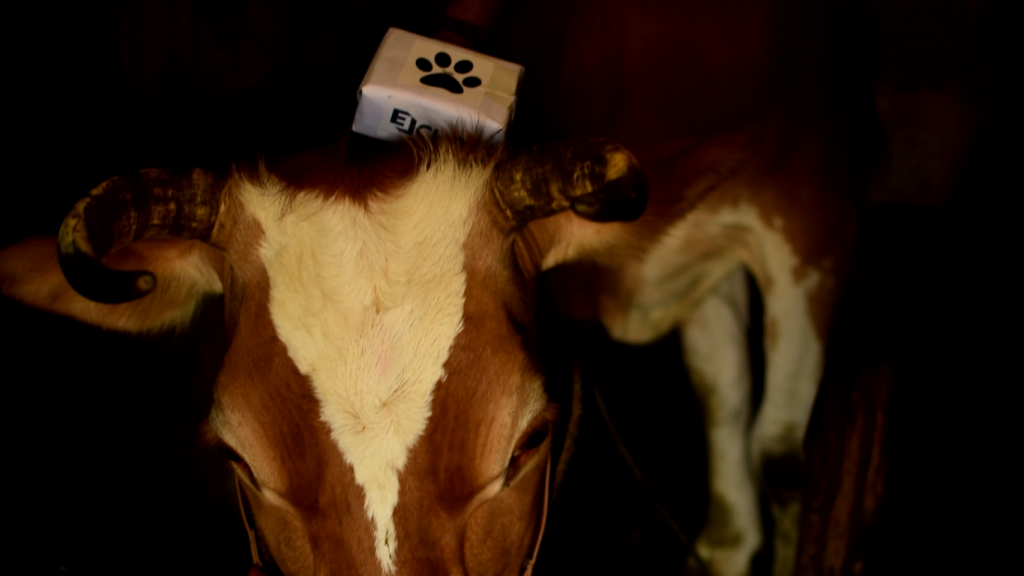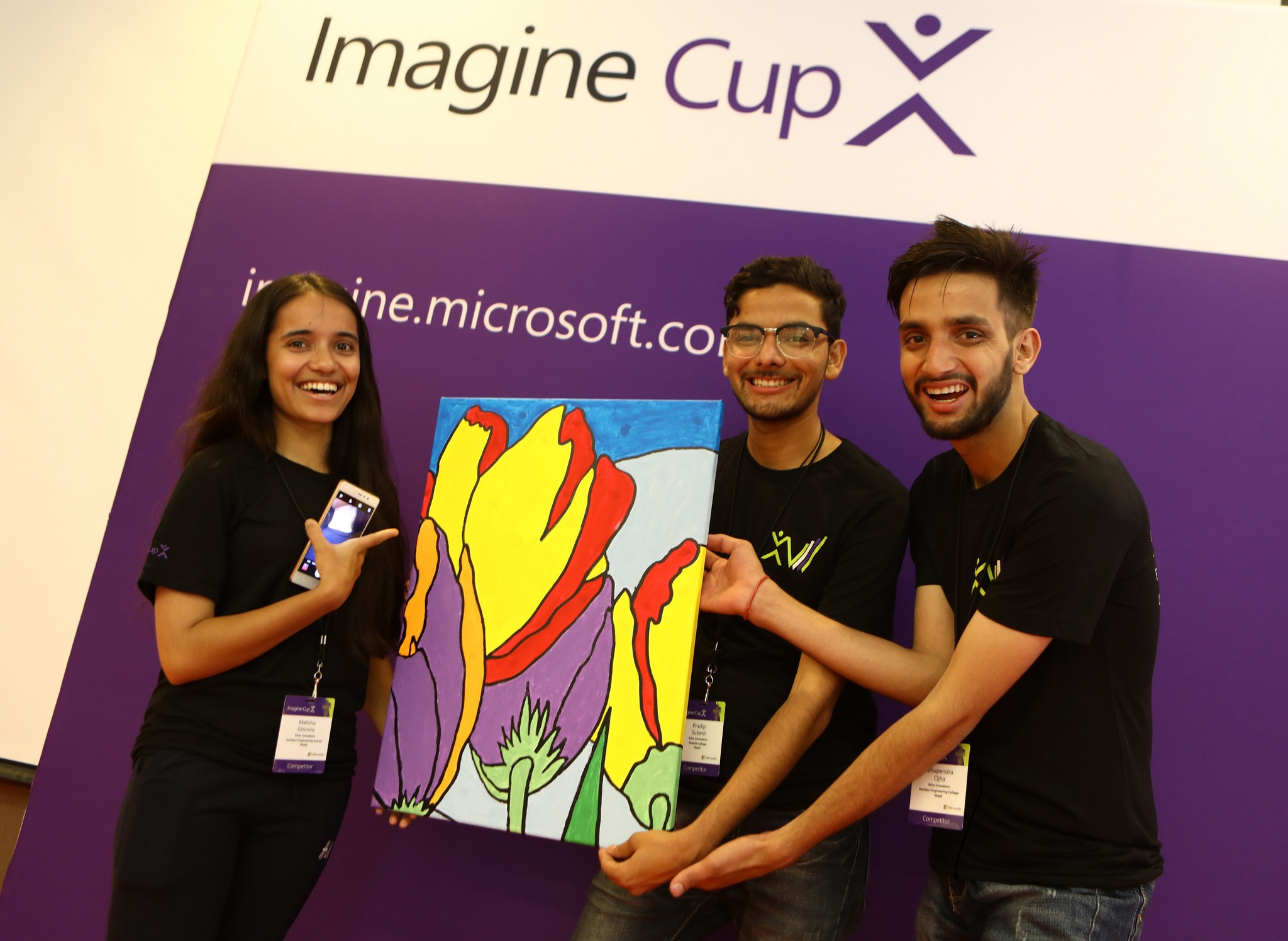
Buffaloes and the Cloud: Students turn to tech to save poor farming families
Say the word “disaster” and what comes to mind? An earthquake, a drought, a flood, a tsunami, a hurricane? These are big and brutish events. They grab headlines, inspire people to donate, and trigger international relief efforts.
But what about the many micro-disasters that can, at any time, befall poor families across the developing world? For those who live on a perpetual economic knife edge even a small misfortune or an unexpected turn of events can devastate their hopes and dreams.
Let’s turn to Thimi, a tiny village in the ancient valley of Bhaktapur in Nepal – a nation that sits in the shadow of the Himalayas and is among the world’s poorest. An overwhelming majority of its 30 million people rely on farming to subsist – often on fragmented, hilly and marginal land where weather and other conditions are subject to extremes. In this rural society, a family typically measures its wealth in the number of animals it keeps.
For years, Rajesh Ghimire and his wife, Sharadha, worked hard to build up a modest herd of 45 cows, goats, and buffaloes. The farm was generating enough income to raise their two children, support four other relatives, and even pay six workers to help out. The Ghimeres had their eyes fixed on better times ahead, and were saving to send their daughter, Ekta, to medical school.
Then, their own micro-disaster struck. A series of heatwaves triggered an outbreak of the disease, anthrax. Almost half of their animals were wiped out and, with that, most of their dreams. The money that had been put away for Ekta’s studies had to be used to save the farm. Seven years later, the family is still trying to claw back what it lost.
Farm animals everywhere are susceptible to the vagaries of the environment and disease. Of course, in the developed world, ranchers and farmers rely on expert scientific and practical advice and care from highly trained veterinarians to help protect their herds. But, there are no veterinarians in remote and impoverished Bhaktapur. When adversity came, the Ghimeres were on their own – unaware, unprepared and unable to act.
Their plight struck a nerve with their niece, Melisha – a 20-year-old who is one of only a handful of women studying computer science at Kantipur Engineering College on the outskirts of the capital, Kathmandu.
“This wasn’t just my uncle’s problem. There are 1.6 million other ‘uncles’ just like him in my country,” she says. “They have the same problem and they need a solution.”
So Melisha and three fellow male students – Pradip Subedi, Bhupendra Ojha, and Sandesh Karki – got to work. The quartet, who call themselves the ‘Echo Innovators”, were sure they could find an answer in data and technology.

“To help people in rural areas, first you must understand their problems,” she says. “We believe technology can solve anything. And in this era – with the help of machine learning (ML) and artificial intelligence (AI) – anything is possible.”
Their optimism was high. But the task they had set themselves was, to say the least, tough.
“We had never learned machine learning and the Internet of things in our curriculum (at college). We had no one to go to or learn from. It’s very hard to find a mentor in Nepal who works on ML and AI. Therefore, we had to study everything on our own and make things possible.”
There were other hurdles. Local restrictions on foreign exchange transactions made importing specialized electronic hardware into Nepal difficult, so they improvised with locally available parts. Finally, Melisha had to deal with traditional gender boundaries. In Nepal, only a tiny fraction of females work in tech and few girls and young women study STEM courses at school and college.
“I am a female. And working with three other guys in a team was a challenge that I faced from my society,” says Melisha.
Undeterred, the Echo Innovators pressed ahead. “We researched livestock practices, talked with veterinary doctors and farmers and came up with a solution. We called it ‘FarmLi’. It is our attempt to bring livestock farming, ML, cloud computing, the Internet of things, and AI together to provide better care for the animals and a brighter future for farmers.”
It works like this: An electronic monitoring device is strapped around the neck of an animal and continuously monitors its vital signs and activity. It consists of two sensors for ambient and core body temperatures; two accelerometers for step count and possible lameness; and a heartbeat sensor to record sleep patterns and stress levels.
“This real-time data is crucial in helping prevent disease outbreaks, detect heat cycles, and increase milk yield,” Melisha explains. “FarmLi transmits live data to the cloud. The database is sent to a dataset on ML Studio hosted on Microsoft Azure. Once inside ML Studio, we use four algorithms to extract meaning from the information gathered.”
These algorithms identify patterns for each animal. This customized analysis is then visualized on a Power BI dashboard. Melisha says ML, based on an expert knowledge base, provides actionable recommendations, which are sent to farmers via their mobile phones.

A farmer is notified when there is a general health alert; when an animal shows symptoms of disease or stress; enters a heat cycle; or might be pregnant.
The project is still in its infancy, but the results have been gratifying so far. Melisha estimates an accuracy rate of 95% from trials on two farms. In one case, a cow was identified with anthrax early enough for a wider outbreak to be averted.
The success and potential of their invention was recognized at this year’s Microsoft Imagine Cup competition for tech students from around the world. The Echo Innovators crew was among the top 10 teams in the finals contest held at Microsoft’s headquarters in Redmond in Washington state.
“Microsoft has helped us in many ways,” Melisha says. “They have provided us with the right infrastructure, the right guidance, and mentorship – which is so important for young people like us. As for technology, Azure is the backbone of our project.”
They see their solution as having potential for small farmers across the developing world where help from vets is scant and reliance on livestock is paramount.
ALSO READ: Strong showing by Asia Pacific students at the Imagine Cup 2017 World Finals
ALSO READ: After tragedy, Imagine Cup team seeks ‘to show the world what Nepal can do’













